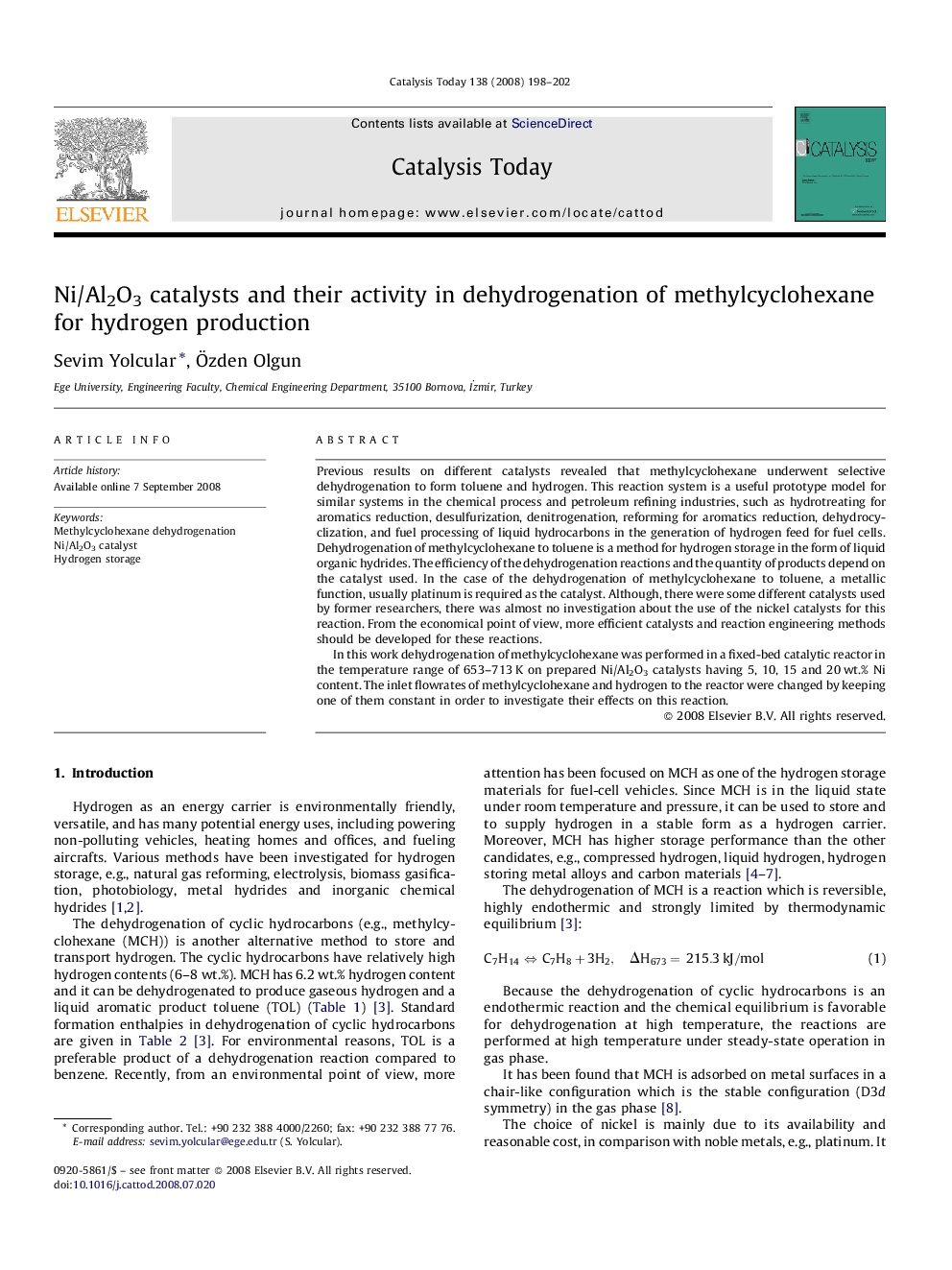| Article ID | Journal | Published Year | Pages | File Type |
|---|---|---|---|---|
| 57797 | Catalysis Today | 2008 | 5 Pages |
Previous results on different catalysts revealed that methylcyclohexane underwent selective dehydrogenation to form toluene and hydrogen. This reaction system is a useful prototype model for similar systems in the chemical process and petroleum refining industries, such as hydrotreating for aromatics reduction, desulfurization, denitrogenation, reforming for aromatics reduction, dehydrocyclization, and fuel processing of liquid hydrocarbons in the generation of hydrogen feed for fuel cells. Dehydrogenation of methylcyclohexane to toluene is a method for hydrogen storage in the form of liquid organic hydrides. The efficiency of the dehydrogenation reactions and the quantity of products depend on the catalyst used. In the case of the dehydrogenation of methylcyclohexane to toluene, a metallic function, usually platinum is required as the catalyst. Although, there were some different catalysts used by former researchers, there was almost no investigation about the use of the nickel catalysts for this reaction. From the economical point of view, more efficient catalysts and reaction engineering methods should be developed for these reactions.In this work dehydrogenation of methylcyclohexane was performed in a fixed-bed catalytic reactor in the temperature range of 653–713 K on prepared Ni/Al2O3 catalysts having 5, 10, 15 and 20 wt.% Ni content. The inlet flowrates of methylcyclohexane and hydrogen to the reactor were changed by keeping one of them constant in order to investigate their effects on this reaction.
